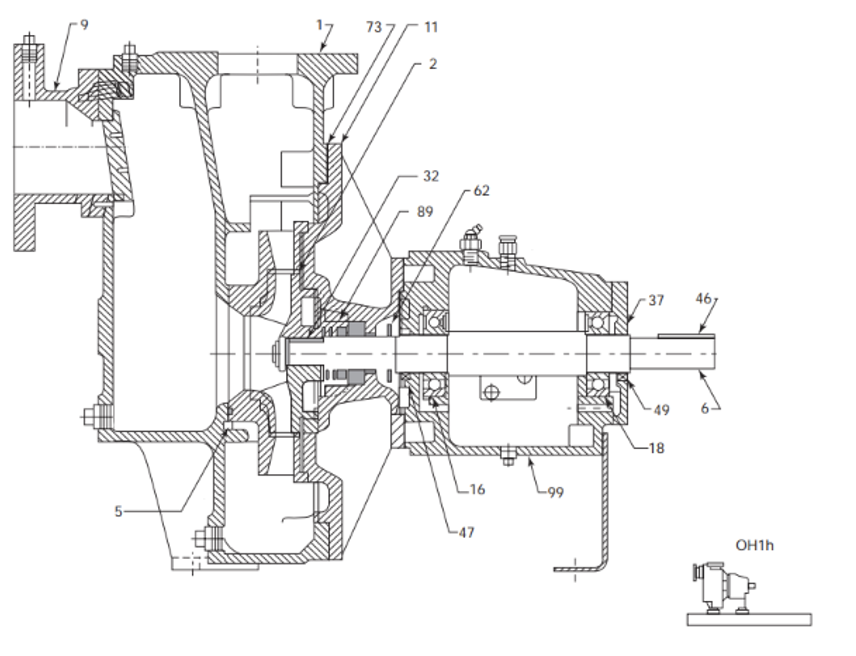
Dewatering, as the name implies, involves removal of water from an unwanted area, such as a construction site. A variety of rotodynamic pumps are used for dewatering, but in many cases, they will need to have special priming provisions or be a self-priming pump design.
Additionally, dewatering pumps often need to be portable and operated where permanent electricity is not available or in the event of a power outage; therefore, engine driven units on portable skids are common.
An example of a self-priming pump that is commonly skid mounted and engine driven is the OH1h pump type (Image 1). This is an overhung (OH) impeller, self-priming pump that is horizontal, has a foot mounted pump casing and is flexibly coupled to the driver. It can be noted there are liquid chambers in the pump casing that remain full when the pump is not operating. The liquid reserved in this chamber recirculates during the priming process as air is evacuated and the fluid below the pump is drawn into the casing.

For more information on pumps for dewatering purposes, refer to HI standard, Rotodynamic Pumps for Design and Application (ANSI/HI 14.3) at pumps.org.


